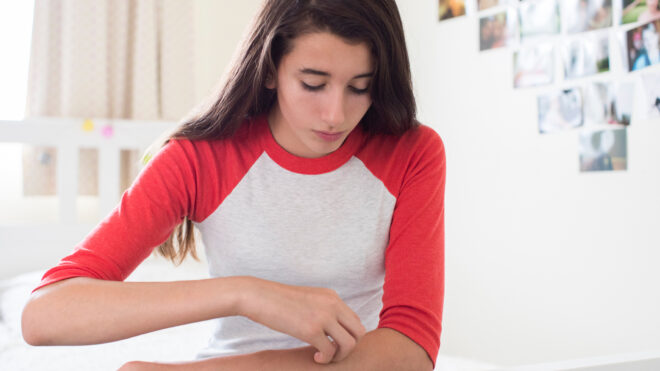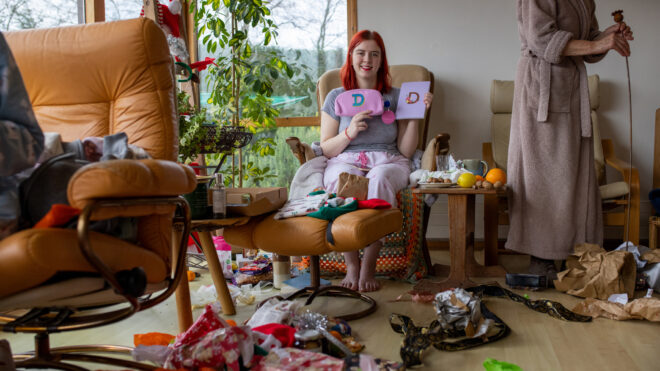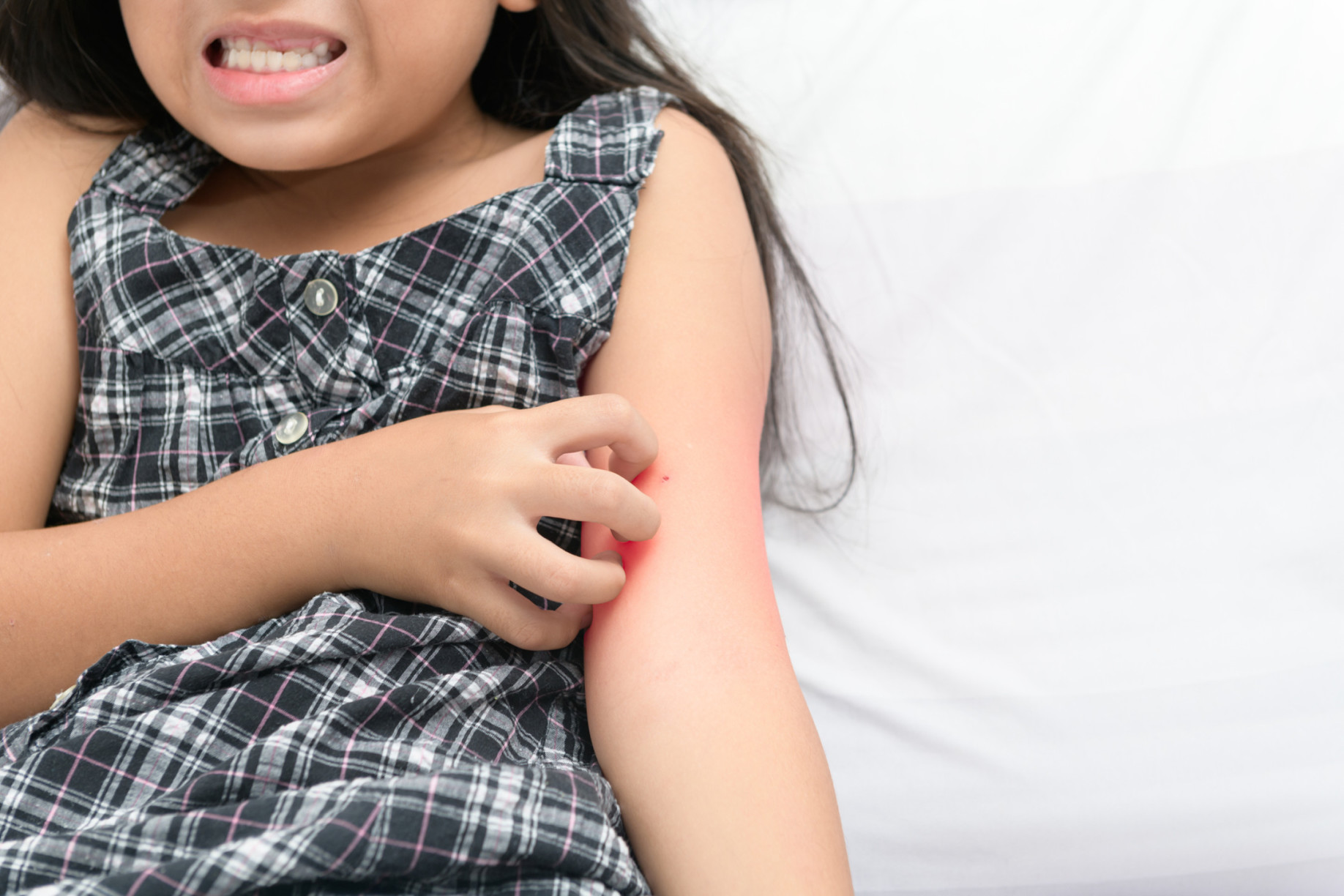
Eczema is a common skin condition. It is estimated that over 31 million Americans live with it.
My husband has struggled with eczema since he was born. His parents often talk about their memories of spending hours and evenings massaging and scratching his back to ease his itchy skin and help him sleep. I never fully understood the condition until my kids developed it.
One of the most stressful moments is when one of my children experience an eczema flare-up. It’s itchy, and painful, and affects their day-to-day routine and sleep. I used to worry about their skin constantly, especially when they were babies.
But over the years, my husband has helped ease my anxious thoughts and I’ve learned how to manage their flare-ups. Here are three ways I help soothe my kids’ eczema during a flare-up.
1. Identify the Triggers
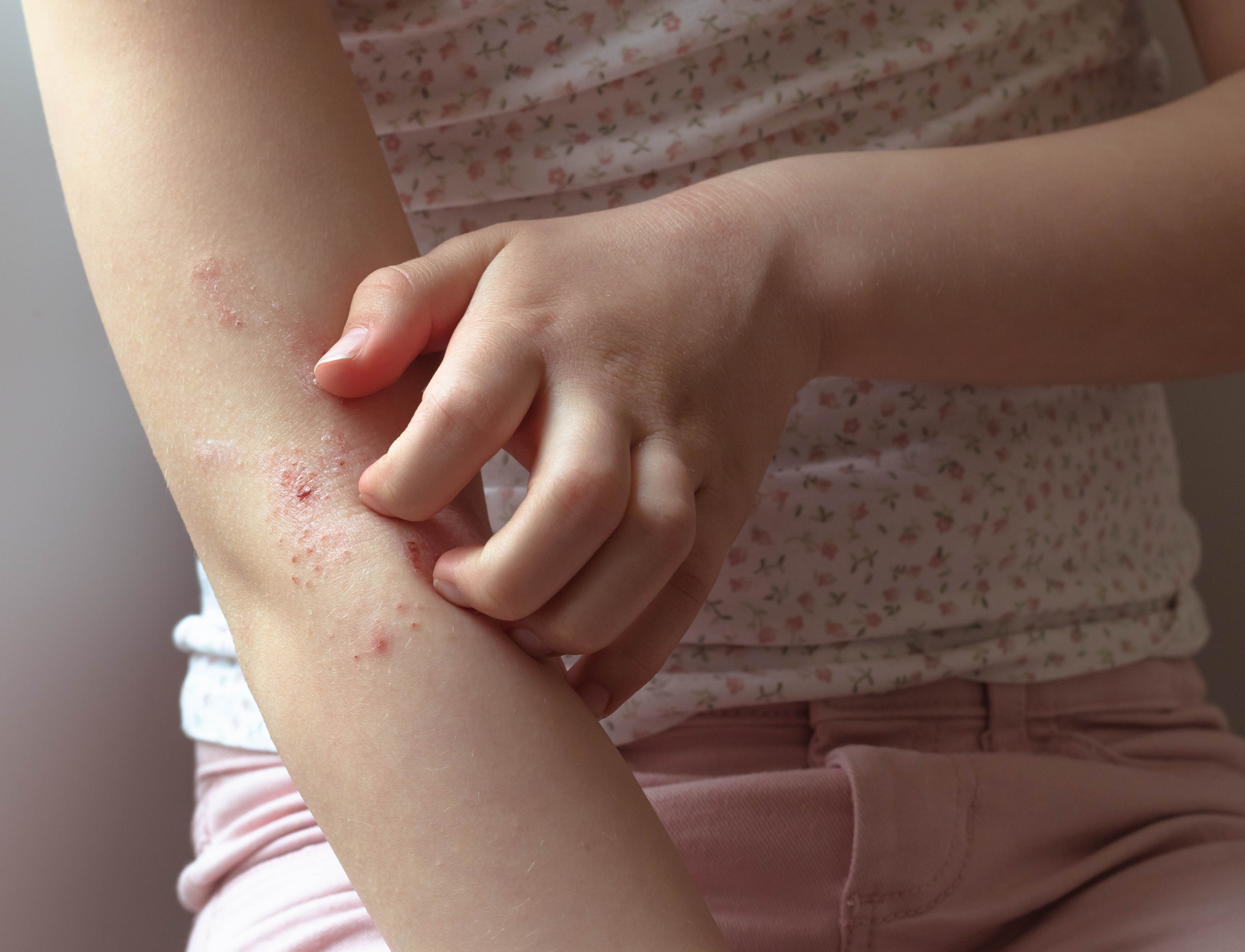
In our household, the most common triggers are related to the changing seasons. We already use fragrance-free, hypoallergenic soaps, laundry detergent, shampoo, and other personal care items to minimize skin irritation.
We vacuum, clean, and wipe surfaces as often as we can to reduce dust mites and dander that can trigger a flare-up. What I cannot control is the weather.
During the fall and winter, the heat is on and the windows are closed, which causes the air to become hot and dry. The dry air causes their skin to become taut, fragile, and rough which makes it more likely for flare-ups to occur.
We’re also washing our hands more frequently to prevent cold, flu and other respiratory illnesses that are commonly spread during the winter months. So, when it’s cold, flare-ups typically occur on my children’s hands and upper arms.
During the spring and summer, although the heat is off and our windows open, my kids are moving around and sweating buckets. The excess sweat they excrete onto their skin can cause an eczema flare-up.
The chemical composition of human sweat consists of natural elements such as sodium, iron, copper, zinc, and nickel that can irritate the skin. For my kids, the flare-ups during the warmer months typically occur around where the skin bends, like behind the knees or on the insides of their elbows.
Lastly, the increase in pollen in the air during the warmer months is also a major trigger.
2. Minimize the Triggers
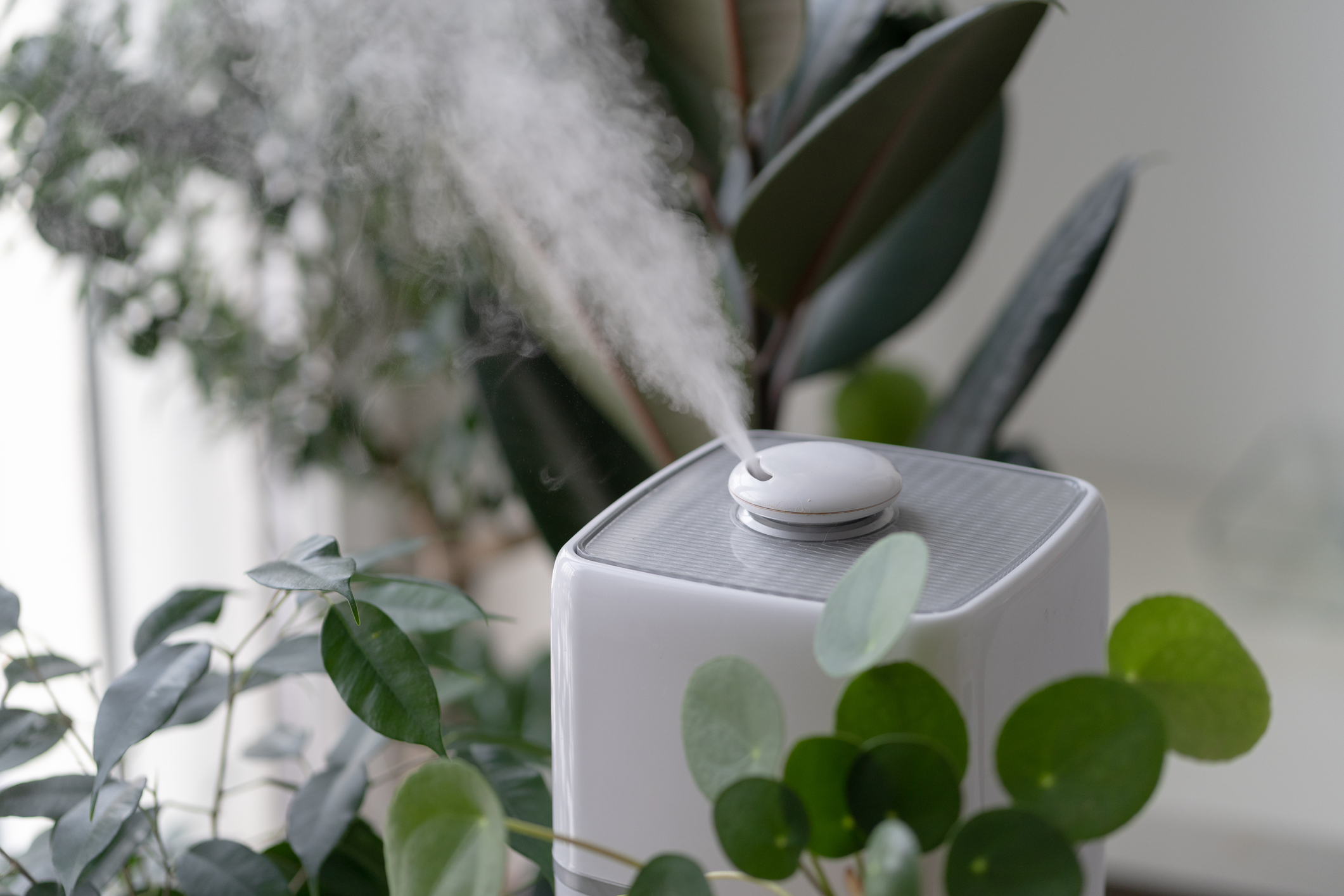
In the winter, I focus on increasing the humidity in the house. We invested in a good-quality, large room humidifier that is powerful enough to keep the moisture up in the kids’ bedroom.
When we take showers and baths, we keep the door open. The water evaporates as steam, which travels throughout our house and helps humidify the air.
After the dishwasher is finished its last rinse cycle, I will open the door to let the dishes air dry. This helps increase the moisture in the living space and saves energy.
Lastly, I love making soups and stews that warm the soul when it's cold. Using the stovetop can help add much-need moisture to the air.
In the summer months, it’s about staying hydrated on the inside by drinking lots of water and eating water-dense foods and minimizing sweat. We keep a fan in the living room to cool the room and minimize sweating.
After they’ve been outside, we teach them to towel themselves off to prevent the sweat from sticking to their skin.
We will give them a rinse in the shower or quickly bathe them without soap to help wash the sweat and outdoor allergens off their skin. When we don’t have time to do this, we will use a wet towel to wipe their skin.
Our kids wear loose cotton shorts and T-shirts in the summer to prevent overheating.
Lastly, throughout all seasons, we try to keep our kids' nails short and clean. This prevents their scratching from turning into a bloody mess.
3. Follow Our Tried & True Wet Wrap Bedtime Routine
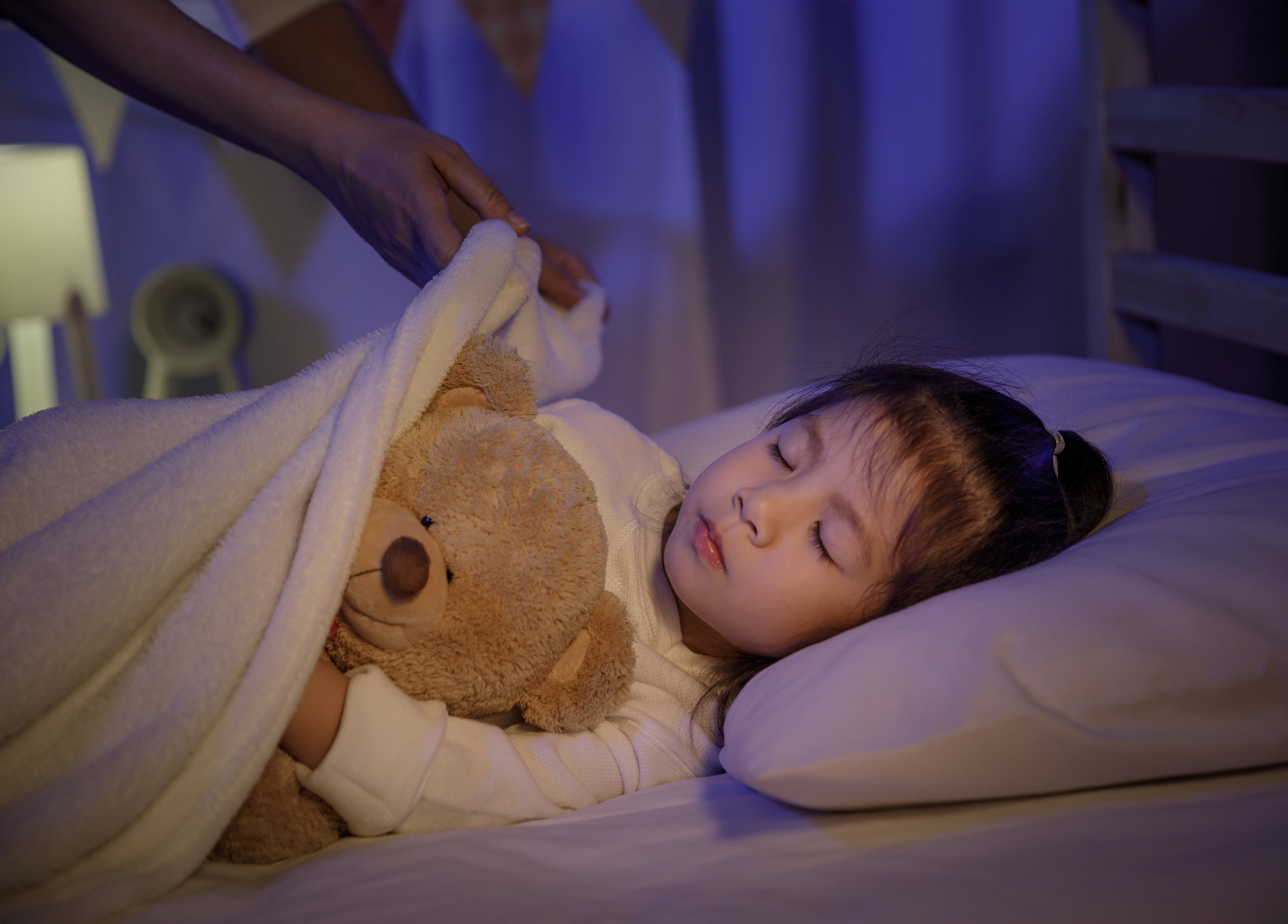
We have a regular skin routine that we follow that includes lukewarm baths with gentle cleansers, followed by moisturizing and applying medicated cream. Consistently following this routine has helped prevent many flare-ups. But when the days are full, it can be challenging to stay on top of it.
There have been many occasions when we didn’t follow our skin routine for several days in a row. Before I know it, they’re scratching the red, raw, itchy patches on their skin and it’s started to bleed.
This is when we do a wet wrap. After their bath, I will rub moisturizer, medicated cream, and petroleum jelly generously on their affected areas.
Then I soak one of my husband’s old cotton socks (clean, of course) with the tip of the foot cut off in water to get it fully wet. I wring it out so that it’s not dripping but damp.
I slide the sock over the itchy part, usually the hands, elbows or knees. Then they wear their pajamas over the wrap to keep them warm while they sleep. By the morning, when I remove the wrap, their symptoms are usually almost all gone.
It’s important to consult with your health care provider before trying any new skin treatments.
*Disclaimer: The advice on CafeMom.com is not a substitute for consultation with a medical professional or treatment for a specific condition. You should not use this information to diagnose or treat a health problem without consulting a qualified professional. Please contact your health-care provider with questions and concerns.



